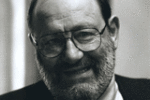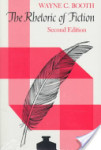 Francine Prose. Reading Like a Writer: A Guide for people who love books and for those who want to write them. This is one of the most useful books anyone who is interested in the nitty-gritty of writing could read. Chapters are organized by their topic, for example, “Gestures,” and Prose illustrates by showing how writers have used gesture not only to triangulate a conversation, but also to enrich the reader’s experience of character, to illuminate the people, place or situation, so that each gesture—fleeting or extended—is unique to the individual making it and has real meaning. This is a book you can dip into anywhere, at any time, and find something new and immediately relevant to your writing. Prose has a magical ability to show how close reading can light the way for writing.
Francine Prose. Reading Like a Writer: A Guide for people who love books and for those who want to write them. This is one of the most useful books anyone who is interested in the nitty-gritty of writing could read. Chapters are organized by their topic, for example, “Gestures,” and Prose illustrates by showing how writers have used gesture not only to triangulate a conversation, but also to enrich the reader’s experience of character, to illuminate the people, place or situation, so that each gesture—fleeting or extended—is unique to the individual making it and has real meaning. This is a book you can dip into anywhere, at any time, and find something new and immediately relevant to your writing. Prose has a magical ability to show how close reading can light the way for writing.
 Twyla Tharp. The Creative Habit. Not a craft book for writers BUT a terrific book for writers who have trouble with self discipline. This book shows the value of extremely high expectations, stamina and a good alarm clock.
Twyla Tharp. The Creative Habit. Not a craft book for writers BUT a terrific book for writers who have trouble with self discipline. This book shows the value of extremely high expectations, stamina and a good alarm clock.
 Umberto Eco. Six Walks in the Fictional Woods. This publication of the 1993 Norton Lectures is a rich and satisfying read for the avid reader who has limited experience with literary criticism. Eco is an erudite guide to the feast of literature available in our time, and his appetite for exploration and conjecture is contagious. I particularly enjoyed his hilarious and touching diagrams that attempt to explain the relationships between empirical author, model author, narrator, fictional characters and reader, and his almost fanatical charting of the temporal vs. chapter sequence in Labrunie’s novel Sylvie.
Umberto Eco. Six Walks in the Fictional Woods. This publication of the 1993 Norton Lectures is a rich and satisfying read for the avid reader who has limited experience with literary criticism. Eco is an erudite guide to the feast of literature available in our time, and his appetite for exploration and conjecture is contagious. I particularly enjoyed his hilarious and touching diagrams that attempt to explain the relationships between empirical author, model author, narrator, fictional characters and reader, and his almost fanatical charting of the temporal vs. chapter sequence in Labrunie’s novel Sylvie.
![]() Dorrit Cohn. Transparent Minds: Narrative Modes for Presenting Consciousness in Fiction. This academic text rewards persistence with its clarifying views on how novelists present characters’ thoughts and feelings to the reader. Cohn uses examples from Joyce, Woolf, Mann, Proust, Dostoevsky, Kafka and many others to illustrate her classification of narrative modes into typological distinctions, focusing her analysis on basic grammatical forms (especially tense and person). This text was invaluable in helping me understand how novelists play with narrative distance in conveying a character’s inner life, in both third person and first person contexts.
Dorrit Cohn. Transparent Minds: Narrative Modes for Presenting Consciousness in Fiction. This academic text rewards persistence with its clarifying views on how novelists present characters’ thoughts and feelings to the reader. Cohn uses examples from Joyce, Woolf, Mann, Proust, Dostoevsky, Kafka and many others to illustrate her classification of narrative modes into typological distinctions, focusing her analysis on basic grammatical forms (especially tense and person). This text was invaluable in helping me understand how novelists play with narrative distance in conveying a character’s inner life, in both third person and first person contexts.
 Wayne C. Booth. The Rhetoric of Fiction. This book is particularly illuminating regarding narrative voice, the spectrum of narrative modes, and the tools great authors have used to control narrative distance.
Wayne C. Booth. The Rhetoric of Fiction. This book is particularly illuminating regarding narrative voice, the spectrum of narrative modes, and the tools great authors have used to control narrative distance.
![]() Richard Hugo. The Triggering Town: Lectures and essays on poetry and writing. This craft book is helpful in freeing the writer from an unproductive focus on what the piece is “about.” The title essay and the piece entitled “Assumptions” are particularly useful for the writer seeking advice on craft.
Richard Hugo. The Triggering Town: Lectures and essays on poetry and writing. This craft book is helpful in freeing the writer from an unproductive focus on what the piece is “about.” The title essay and the piece entitled “Assumptions” are particularly useful for the writer seeking advice on craft.
Back to Posts